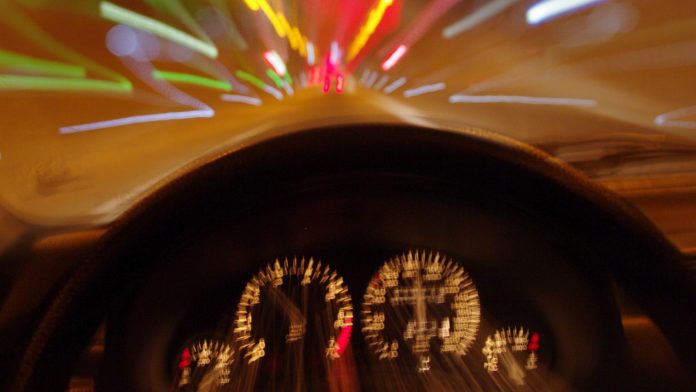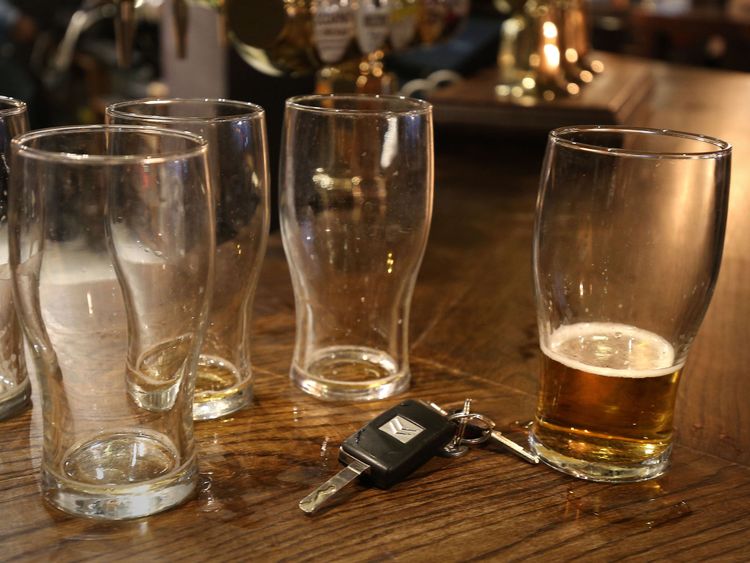[ad_1]
The government is being urged to introduce zero-tolerance laws as the number of drink-drive casualties reached a four-year high.
New figures released by the Department for Transport (DfT) revealed an estimated 9,040 people were killed or injured in Britain in drink-drive accidents in 2016.
This is the highest number since 2012 and represents a 7% rise from the year before.
It means around one in 20 casualties in reported road accidents in 2016 was as a result of drink-driving.
An estimated 230 people were killed in Britain in accidents where at least one driver or rider was over the drink-drive limit in 2016, which was also higher than 2015.
The figure represents about 13% of all deaths in reported road accidents in 2016.
In that year, 79% of drink-drive accidents involved male drivers or riders over the limit, with 20% female.
Meanwhile, men made up 66% of casualties in drink-drive accidents, with women making up 34%.
The DfT branded the increase in estimated drink-drive deaths “not statistically significant” but campaigners demanded action from ministers in the wake of the figures.
In England and Wales, the alcohol limit for drivers is 80 milligrammes of alcohol per 100 millilitres of blood, 35 microgrammes per 100 millilitres of breath or 107 milligrammes per 100 millilitres of urine.
This is higher than most other European countries.
In 2014, the alcohol limit in Scotland was reduced to 50 milligrammes of alcohol in every 100 millilitres of blood, and the breath alcohol equivalent reduced to 22 microgrammes of alcohol per 100 millilitres of breath.
Commenting on the DfT statistics, Joshua Harris, director of campaigns at road safety charity Brake, said: “How many more lives must be needlessly lost before the government acts on drink-driving?
“Today’s figures show that drink-driving is an increasing blight on British roads and yet the government sits on its hands and refuses to address the issue.
“The government should put its money where its mouth is and align the law with the message from its ‘Think!’ campaign: ‘if you’re driving, it’s better to have none for the road’.
“Only this zero-tolerance approach can create the change required to rid our roads of the menace of drink-driving.”
Mr Harris claimed the current drink-driving limit in England and Wales “gives a false impression that it is safe to drink and drive”, which he branded a “dangerous message and one that couldn’t be further from the truth”.
Brake are calling for the government to reduce the limit to 20 milligrammes per 100 millilitres of blood as an “effective zero tolerance drink-drive limit” and a means of “making clear to drivers that not a drop of alcohol is safe”.
RAC road safety spokesman Pete Williams described the statistics as “very disappointing” and expressed concern they could represent “the start of a trend to which the government must be vigilant”.
A DfT spokeswoman said: “Drink-driving is completely unacceptable, which is why there are tough penalties and rigorous enforcement in place for those who do this.
“The latest statistics do not show a statistically significant increase in drink-driving fatalities.
“Britain has some of the safest roads in the world and the number of fatalities has fallen by 44% over the last 10 years, but we are determined to do more.”
In 1979, the first year of detailed reporting, there were around 19,470 drink-drive accidents.
The number fell to less than 10,000 by 1993, a level it has remained below for each year since 2006, and to around 6,000 for each year since 2013.
The number of overall road traffic accidents has also fallen since 1979, although drink-drive accidents have fallen further.
[ad_2]









